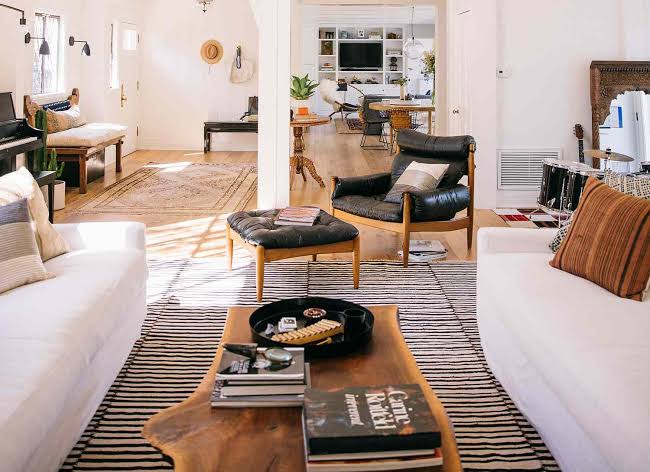Introduction: Embracing Change in Home Design
Home design is an ever-evolving field, influenced by shifts in lifestyle, technology, and cultural trends. As homeowners increasingly seek spaces that reflect their personal style, promote well-being, and adapt to their changing needs, the demand for innovative remodeling and renovation solutions has grown. Understanding the latest trends in home design can help you make informed decisions when planning your next remodeling project, ensuring that your home remains stylish, functional, and future-proof.
In this article, we’ll explore the most significant trends shaping the future of home design, offering insights into how these trends can be incorporated into your remodeling and renovation plans.
Sustainable and Eco-Friendly Design: Building for the Future
The Rise of Sustainable Materials
As environmental awareness continues to grow, sustainable design has become a top priority for many homeowners. Choosing eco-friendly materials not only reduces your home’s environmental impact but also contributes to a healthier living environment.
Sustainable Material Trends:
- Reclaimed Wood: Using reclaimed wood for flooring, cabinetry, or accent walls is a popular choice for eco-conscious homeowners. This material adds character and warmth to a space while reducing the demand for new lumber.
- Bamboo: Bamboo is a highly sustainable option for flooring and cabinetry. It grows rapidly, making it a renewable resource, and its durability makes it a practical choice for high-traffic areas.
- Recycled Materials: Incorporating recycled materials, such as glass countertops, recycled metal fixtures, or composite decking, is an excellent way to create a unique and environmentally friendly design.
Companies like PMB Property Improvements, a leader in property management and remodeling, are at the forefront of integrating sustainable practices into their renovation projects. By focusing on eco-friendly materials and energy-efficient systems, PMB Property Improvements ensures that your home is not only stylish but also environmentally responsible.
Energy Efficiency: Designing with the Environment in Mind
In addition to sustainable materials, energy efficiency is a key consideration in modern home design. Homeowners are increasingly looking for ways to reduce energy consumption and lower utility bills while maintaining comfort and convenience.
Energy-Efficient Design Elements:
- Smart Thermostats: Smart thermostats allow homeowners to control their home’s temperature remotely, optimizing energy use and reducing costs. These devices can learn your schedule and adjust settings automatically, ensuring efficient heating and cooling.
- High-Efficiency Windows: Replacing old windows with high-efficiency models can significantly reduce heat loss in the winter and heat gain in the summer, improving your home’s energy efficiency and comfort.
- LED Lighting: LED lighting is more energy-efficient than traditional incandescent bulbs and offers a longer lifespan. Integrating LED fixtures into your home’s design reduces energy consumption and maintenance costs.
Focusing on energy efficiency during your remodel not only benefits the environment but also leads to long-term savings on utility bills.
Smart Homes: Integrating Technology into Design
The Growth of Smart Home Systems
As technology becomes increasingly integrated into our daily lives, smart home systems are becoming a staple of modern home design. These systems offer convenience, security, and energy efficiency, making them a valuable addition to any remodeling project.
Popular Smart Home Features:
- Home Automation Systems: Comprehensive home automation systems allow homeowners to control lighting, temperature, security, and entertainment systems from a single interface. These systems can be customized to suit your needs, providing both convenience and peace of mind.
- Voice-Controlled Assistants: Devices like Amazon Alexa and Google Home have become common in many households, enabling voice control of smart devices throughout the home. Integrating these assistants into your remodel can enhance convenience and accessibility.
- Smart Appliances: From refrigerators that can create grocery lists to ovens that can be controlled remotely, smart appliances are transforming the way we interact with our homes. Incorporating smart appliances into your kitchen remodel can streamline your daily routines and improve efficiency.
By embracing smart home technology, you can create a living space that is both cutting-edge and tailored to your lifestyle.
Home Security: Protecting What Matters Most
Home security is another area where technology is making a significant impact. Modern security systems offer advanced features that provide greater control and peace of mind.
Smart Security Solutions:
- Video Doorbells: Video doorbells allow homeowners to see and speak with visitors remotely, providing an added layer of security. These devices can also record activity at your front door, offering valuable footage in case of suspicious activity.
- Smart Locks: Smart locks enable keyless entry and can be controlled via smartphone, allowing homeowners to lock or unlock doors remotely. This feature is particularly useful for granting access to guests or service providers without needing to be home.
- Security Cameras: Modern security cameras offer high-definition video, motion detection, and remote viewing capabilities. Integrating these cameras into your home’s design can enhance security both inside and outside the property.
Incorporating smart security features into your remodel ensures that your home remains safe and secure, giving you peace of mind whether you’re at home or away.
Flexible and Multi-Functional Spaces: Adapting to Changing Needs
The Demand for Multi-Use Rooms
As families’ needs evolve, the demand for flexible, multi-functional spaces has increased. Whether it’s a home office that doubles as a guest room or a playroom that can transition into a study area, creating adaptable spaces is a key trend in home design.
Ideas for Multi-Functional Spaces:
- Home Offices: With more people working remotely, the need for dedicated home office space has grown. Designing a flexible home office that can also serve as a guest room or hobby space can maximize the utility of your home.
- Open-Concept Living: Open-concept designs remain popular for their ability to create versatile, flowing spaces. By eliminating walls between the kitchen, dining, and living areas, you can create a multi-functional space that adapts to your lifestyle.
- Convertible Furniture: Incorporating convertible furniture, such as Murphy beds, fold-out desks, or expandable tables, allows rooms to serve multiple purposes without sacrificing style or comfort.
Designing for flexibility ensures that your home can adapt to your changing needs, making it more functional and comfortable for the long term.
Outdoor Living: Expanding Usable Space
Outdoor living spaces have become increasingly popular, offering homeowners a way to expand their usable space and enjoy nature without leaving home. Whether it’s a patio, deck, or fully equipped outdoor kitchen, these spaces are becoming an integral part of modern home design.
Trends in Outdoor Living:
- Outdoor Kitchens: Fully equipped outdoor kitchens allow for cooking and entertaining al fresco. These spaces often include grills, sinks, refrigerators, and dining areas, making them perfect for gatherings.
- Covered Patios and Pergolas: Adding a covered patio or pergola extends your living space outdoors while providing protection from the elements. These structures can be designed to complement your home’s architecture and offer a comfortable space for relaxation or dining.
- Fire Pits and Fireplaces: Fire pits and outdoor fireplaces create a focal point in your outdoor living area, providing warmth and ambiance. These features can be customized to fit your space and style, making them a popular choice for year-round enjoyment.
By incorporating outdoor living spaces into your remodel, you can enhance your home’s functionality and create a seamless transition between indoor and outdoor areas.
Wellness and Biophilic Design: Creating Healthier Homes
The Rise of Wellness-Focused Design
Wellness-focused design is gaining traction as homeowners increasingly prioritize health and well-being in their living spaces. This approach to design emphasizes natural light, clean air, and a connection to nature, creating environments that support physical and mental health.
Wellness Design Strategies:
- Natural Light: Maximizing natural light in your home can improve mood, productivity, and overall well-being. Consider adding larger windows, skylights, or light wells to bring more daylight into your space.
- Indoor Air Quality: Improving indoor air quality is essential for a healthy home. Installing air purifiers, using low-VOC paints and finishes, and incorporating plants can help create a cleaner, fresher environment.
- Biophilic Design: Biophilic design integrates natural elements into the home, such as living walls, water features, and indoor gardens. These features create a calming atmosphere and strengthen the connection between the indoors and the natural world.
Incorporating wellness-focused design elements into your home remodel can enhance your quality of life by creating a healthier, more balanced living environment.
Designing for Mental Well-Being
In addition to physical health, mental well-being is an important consideration in home design. Creating spaces that promote relaxation, mindfulness, and a sense of calm can contribute to overall happiness and well-being.
Designing for Mental Wellness:
- Calming Color Palettes: Soft, neutral colors create a serene atmosphere that can help reduce stress and anxiety. Incorporating these tones into your home’s design can create a peaceful environment that supports mental wellness.
- Quiet Zones: Designing quiet zones, such as reading nooks, meditation spaces, or tranquil gardens, provides a retreat from the hustle and bustle of daily life. These areas can be used for relaxation, reflection, or creative pursuits.
- Personalized Spaces: Creating spaces that reflect your personal interests and passions can enhance your sense of fulfillment and well-being. Whether it’s a hobby room, art studio, or music space, incorporating these elements into your home’s design can enrich your daily life.
Focusing on mental well-being in your home design ensures that your living space supports a balanced, fulfilling lifestyle.
Conclusion: Staying Ahead in Home Design
The future of home design is shaped by sustainability, technology, flexibility, and wellness. By embracing these trends in your remodeling and renovation projects, you can create a home that is not only beautiful and functional but also aligned with your values and lifestyle. Whether you’re incorporating sustainable materials, integrating smart home systems, or designing multi-functional spaces, staying ahead of the trends ensures that your home remains a comfortable, stylish, and future-proof sanctuary.



